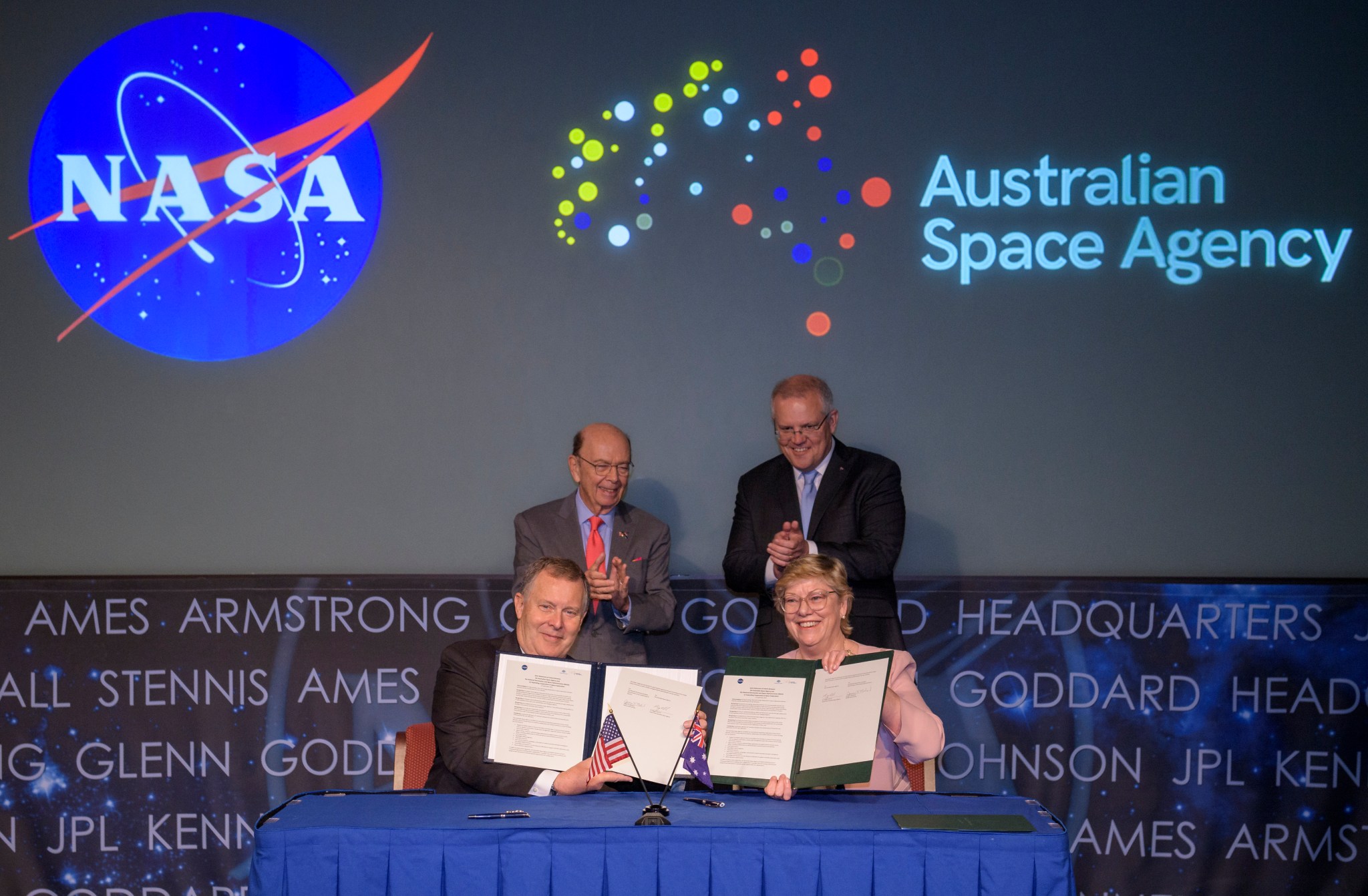
Australian Prime Minister Scott Morrison has announced his nation’s intention to join the United States’ Moon to Mars exploration approach, including NASA’s Artemis lunar program.
The announcement took place at a ceremony Saturday at NASA Headquarters in Washington during which NASA Deputy Administrator, Jim Morhard, and Head of the Australian Space Agency, Megan Clark, signed a joint statement of intent. Secretary of Commerce Wilbur Ross, Australian Ambassador to the United States Joe Hockey and U.S. Ambassador to Australia Arthur Culvahouse Jr. also participated in the ceremony.
The statement foresees potential Australian contributions in areas of mutual interest such as robotics, automation, and remote asset management – similar to that currently used by Australia in mining operations – and builds on a unique history of space cooperation between the U.S. and Australia that dates back to the Apollo era.
As part of Australia’s commitment to partner with NASA, Morrison pledged to more than triple the Australian Space Agency budget to support Artemis and Moon to Mars.
“We are honored by today’s statement and the commitment of our friends from Australia to support us in our mission to return to the Moon by 2024 with the Artemis program,” Morhard said. “The strong relationship between NASA and the Australian Space Agency affirms NASA’s commitment to establish sustainable exploration with our commercial and international partners by 2028.”
Although the Australian Space Agency is relatively new, established a little over a year ago, Australia has a long tradition of working closely with the U.S. in space activities. A formal agreement between NASA and the Commonwealth Scientific Industrial Research Organisation (CSIRO) signed in 1960 allows for tracking and communication of NASA missions through the Canberra Deep Space Communication Complex (CDSCC) at Tidbinbilla, as well as the Data Relay Satellite facilities in Alice Springs, Northern Territory, and Dongara, Western Australia. The CDSCC serves as an integral component of NASA’s Deep Space Network.
In August, the Mars 2020 and ExoMars rover science teams honed their skills in the Australian Outback, where the rocks are of similar age to the terranes on Mars, in preparation for their respective missions to launch to the Red Planet next summer in search of signs of past life on Mars.
Saturday’s joint statement strengthens the relationship between Australia and the U.S. and broadens the community of nations joining NASA in further exploration of the Moon, Mars, and beyond. Through Artemis, NASA will send the first woman and next man to the surface the Moon by 2024, and establish sustainable exploration with our commercial and international partners by 2028. NASA’s Artemis program is the next step in human exploration and is a part of America’s broader Moon to Mars exploration approach.
For information about the Australian Space Agency, visit:
For more information about the Moon to Mars exploration approach, visit:
-end-
Bettina Inclán
Headquarters, Washington
202-358-1600
bettina.inclan@nasa.gov

























